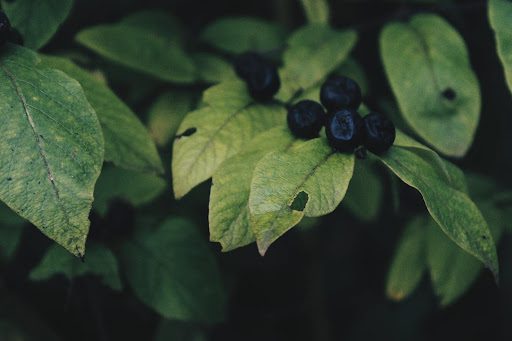If you’re looking for a way to add some delicious, nutritious, and antioxidant-rich huckleberries to your diet, you’ve come to the right place! Growing huckleberries in Maine is a great way to have access to fresh fruit without breaking the bank. Plus, it’s a fun activity that can be done with friends or family. Before you start planting, there are some things you should know about growing and harvesting huckleberries.
In this blog, we’ll teach you everything you need to know about growing and harvesting huckleberries in a Maine garden, from the best soil and climate conditions for success to picking them efficiently. Whether you’re looking to add some beauty to your landscape or want an abundant source of fresh fruit, this article will help guide you on growing huckleberries.
What Is A Huckleberry And Where Are They Found?
Huckleberries are small, tart berries that can be found in the wild in many parts of North America. The most popular variety is Vaccinium membranaceum – also known as the black huckleberry or blackcap huckleberry – which grows primarily in western North America and Canada. Other varieties include blue huckleberries (Vaccinium caespitosum) and red huckleberries (Vaccinium parvifolium), both found throughout Maine’s forests.
Huckleberries are often used in jams and jellies but are also delicious when eaten fresh. Their sweet-tart flavor is similar to blueberries but with a bit of an herbal edge. They’re an excellent source of antioxidants, vitamins, and minerals that can help boost your immune system and fight off disease.
How To Grow Huckleberries In Your Maine Garden
If you want to enjoy huckleberries all year round, you can grow them in your Maine garden! Growing huckleberries at home is fairly easy and can be done in any area with the right climate conditions.
Depending on the species, huckleberries are hardy in USDA Zones 3-7. The cold winters of Maine make it an ideal place to grow them. They need full sun and at least 6 hours of direct sunlight daily for the best growth.
The first thing to consider is the soil. Huckleberries need acidic soil with a pH level between 4.3 and 5.2 (more on this later). If your soil isn’t acidic enough, you can add sulfur or peat moss to lower the pH. The plants also prefer well-drained, sandy loam soils with plenty of organic matter added in for nutrients.
When planting huckleberries, make sure to space them about 3-4 feet apart and give them plenty of room to spread out as they mature. Give each plant a generous amount of mulch around the base to help retain moisture in the soil; wood chips or shredded leaves are both good options.
Huckleberry plants need to be watered regularly in order to produce fruit. The amount of water they need will depend on the climate where you live. In general, huckleberry plants should be watered about once per week during the growing season. During hot weather or periods of drought, you may need to water them more often. Ensure the soil around your huckleberry plants is always moist but not soggy. Overwatering can lead to root rot, which can kill your plants.
Next, huckleberries require full sun for at least six hours a day, so make sure your garden spot gets plenty of sunshine. They also need regular water but are fairly drought-tolerant once established.
Once you’ve planted your huckleberry bushes, you should start to see fruit in the late summer or early fall. But if you want a bigger harvest, consider fertilizing with compost or manure before and after the flowering season. You can also prune your plants back each year to keep them healthy and productive.
How To Harvest Huckleberries
Huckleberry bushes usually start producing fruit after three to four years, but you can expect a full harvest in five or six years. The exact time also depends on your climate and growing conditions.
Huckleberries are typically ready for harvest between August and September when they turn dark blue or purple in color. The berries will be dark purple-blue in color (or red for some varieties) and easily come off the plant when touched. Be sure to pick only fully ripened berries as these tend to have the best flavor; unripe berries won’t be sweet enough for eating fresh.
When harvesting, try not to pull on the vines too hard, as this can damage the plant – instead, use scissors or clippers to snip off the berries. Also, be careful not to pick too many at once, as this can strain the plant’s resources and reduce its ability to produce fruit in future years.
Once you’re finished picking, you can store your huckleberries for later use by freezing them or making jams and jellies. Fresh huckleberries can also be eaten right away – they make a delicious addition to salads, desserts, smoothies, and much more!
How To Care For Huckleberries
Once you’ve planted your huckleberry bushes, they need regular care to stay healthy and productive.
Pruning is an important part of caring for huckleberries. You will need to prune your bush each year in order to promote new growth. Remove any dead or diseased wood from the plant in late winter or early spring. You should also trim back any branches that are crossing over each other or rubbing against one another. This will help to open up the bush and let in more light and air.
Check for pests periodically as well; deer can be a major nuisance in some areas. You may need to install a fence around your garden if they become a problem. Rabbits and other small animals will also eat ripe berries, so keep an eye out for them too!
Huckleberries need to be stored in the refrigerator in order to keep them from going bad. They can last up to two weeks when stored in this way. If you plan on freezing your huckleberries, make sure to do so within 24 hours of picking them. This will help to preserve their flavor and texture.
With proper care and maintenance, your huckleberry bushes should produce delicious fruit for many years. So, get out there and start growing – you won’t regret it!
Recipes And Uses For Huckleberries
Huckleberries are a versatile fruit that can be used in various delicious recipes. From pies and cobblers to jams, jellies, smoothies, and more – there’s no limit to what you can do with these sweet little berries.
For something special, try making huckleberry pancakes or waffles for breakfast. Just mix together your favorite pancake batter and add fresh or frozen huckleberries at the end. You can also use them to top ice cream sundaes or yogurt parfaits for an easy yet impressive dessert.
If you’re looking for a savory dish, why not try your hand at huckleberry chutney? This sweet and tangy condiment is perfect for adding a pop of flavor to grilled meats or sandwiches. You can also use huckleberries to make jams, jellies, sauces, syrups, and more – the possibilities are endless!
No matter how you choose to enjoy them, huckleberries are sure to add a burst of flavor and color to your recipes. So, get out there and start experimenting today!
Closing Thoughts
In conclusion, growing huckleberries may take some time and effort, but the rewards will be well worth it. With proper care and maintenance, you can expect a full harvest in five or six years that you can use in all kinds of delicious recipes. Whether you’re enjoying them fresh off the bush or turning them into jams and jellies, huckleberries are sure to add a unique flavor to your meals. So why not give it a try? You won’t regret it!
Do you want to enjoy your outdoor space this fall and winter? Stone Solutions Maine will help you create the 4-season patio of your dreams. Contact us today for a free consultation.

